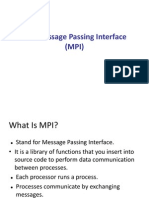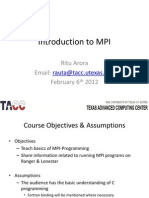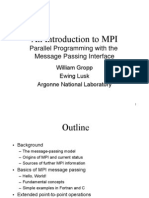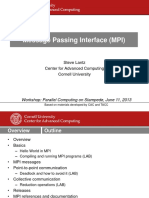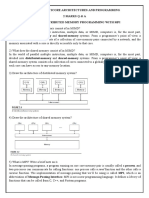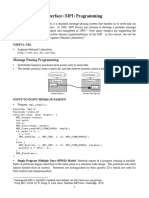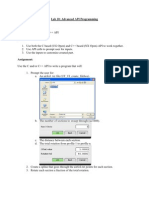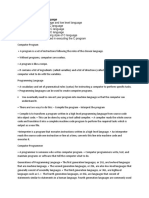0% found this document useful (0 votes)
20 views51 pagesLecture 10-Introduction To MPI
The document provides an overview of Applied High-Performance Computing and Parallel Programming, focusing on the Message Passing Interface (MPI) and its role in distributed memory systems. It covers key concepts such as communicators, ranks, point-to-point communication, and the structure of MPI programs, including initialization and finalization. Additionally, it discusses the importance of using MPI wrapper compilers for code compilation and job submission in HPC environments.
Uploaded by
roarsomebrosCopyright
© © All Rights Reserved
We take content rights seriously. If you suspect this is your content, claim it here.
Available Formats
Download as PDF, TXT or read online on Scribd
0% found this document useful (0 votes)
20 views51 pagesLecture 10-Introduction To MPI
The document provides an overview of Applied High-Performance Computing and Parallel Programming, focusing on the Message Passing Interface (MPI) and its role in distributed memory systems. It covers key concepts such as communicators, ranks, point-to-point communication, and the structure of MPI programs, including initialization and finalization. Additionally, it discusses the importance of using MPI wrapper compilers for code compilation and job submission in HPC environments.
Uploaded by
roarsomebrosCopyright
© © All Rights Reserved
We take content rights seriously. If you suspect this is your content, claim it here.
Available Formats
Download as PDF, TXT or read online on Scribd
/ 51

